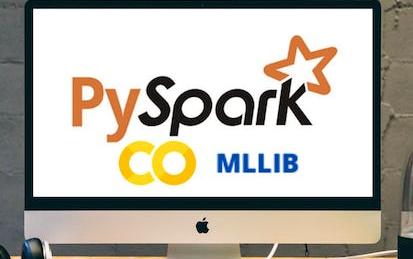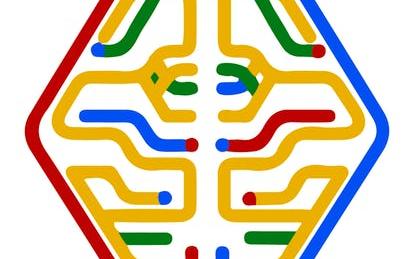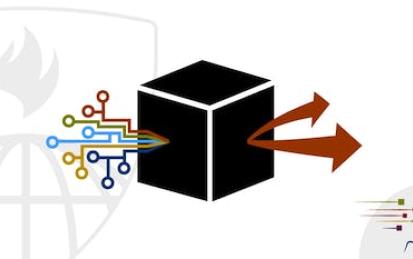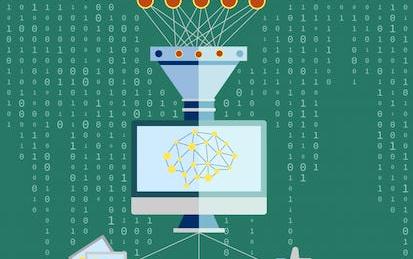

دوراتنا

Population Health: Predictive Analytics
Predictive analytics has a longstanding tradition in medicine. Developing better prediction models is a critical step in the pursuit of improved health care: we need these tools to guide our decision-making on preventive measures, and individualized treatments. In order to effectively use and develop these models, we must understand them better. In this course, you will learn how to make accurate prediction tools, and how to assess their validity. First, we will discuss the role of predictive analytics for prevention, diagnosis, and effectiveness.
-
Course by

-
 Self Paced
Self Paced
-
 17 ساعات
17 ساعات
-
 الإنجليزية
الإنجليزية

Predicting the Weather with Artificial Neural Networks
In this one hour long project-based course, you will tackle a real-world prediction problem using machine learning. The dataset we are going to use comes from the Australian government. They recorded daily weather observations from a number of Australian weather stations. We will use this data to train an artificial neural network to predict whether it will rain tomorrow.
By the end of this project, you will have created a machine learning model using industry standard tools, including Python and sklearn.
-
Course by

-
 Self Paced
Self Paced
-
 2 ساعات
2 ساعات
-
 الإنجليزية
الإنجليزية

Financial Analysis of Organizations
This course focuses on adopting and implementing a financially analytic mindset when analyzing organizational activities, position and performance. This course begins with an overview of an organization’s financial statements, including the balance sheet, income statement, cash flow statement, as well as the transactions that comprise these statements. You will learn about tools and ratios that help analyze these financial statements and transactions. Financial statement analysis will help you understand how the company has performed in the past and its current position.
-
Course by

-
 Self Paced
Self Paced
-
 16 ساعات
16 ساعات
-
 الإنجليزية
الإنجليزية

Diabetes Prediction With Pyspark MLLIB
In this 1 hour long project-based course, you will learn to build a logistic regression model using Pyspark MLLIB to classify patients as either diabetic or non-diabetic. We will use the popular Pima Indian Diabetes data set. Our goal is to use a simple logistic regression classifier from the pyspark Machine learning library for diabetes classification. We will be carrying out the entire project on the Google Colab environment with the installation of Pyspark.You will need a free Gmail account to complete this project.
-
Course by

-
 Self Paced
Self Paced
-
 3 ساعات
3 ساعات
-
 الإنجليزية
الإنجليزية

Titanic Survival Prediction Using Machine Learning
In this 1-hour long project-based course, we will predict titanic survivors’ using logistic regression and naïve bayes classifiers. The sinking of the Titanic is one of the key sad tragedies in history and it took place on April 15th, 1912. The numbers of survivors were low due to lack of lifeboats for all passengers. This practical guided project, we will analyze what sorts of people were likely to survive this tragedy with the power of machine learning. Note: This course works best for learners who are based in the North America region.
-
Course by

-
 3 ساعات
3 ساعات
-
 الإنجليزية
الإنجليزية

Build Regression, Classification, and Clustering Models
In most cases, the ultimate goal of a machine learning project is to produce a model. Models make decisions, predictions—anything that can help the business understand itself, its customers, and its environment better than a human could. Models are constructed using algorithms, and in the world of machine learning, there are many different algorithms to choose from.
-
Course by

-
 Self Paced
Self Paced
-
 20 ساعات
20 ساعات
-
 الإنجليزية
الإنجليزية

Data Science Tutorial
Start learning Data science with the W3Schools course. Data Science is about data gathering, analysis and decision-making. Data Science is about finding patterns in data, through analysis, and make future predictions. This is a structured and interactive version of the W3Schools Data science Tutorial. The course is self-paced with text based modules, practical interactive examples and exercises to check your understanding as you progress. W3schools is the world's largest web developer learning site. Start learning with our proven tutorials used by millions of learners!
-
Course by

-
 Self Paced
Self Paced
-
 7 ساعات
7 ساعات
-
 الإنجليزية
الإنجليزية

Predict Baby Weight with TensorFlow on AI Platform
In this lab you train, evaluate, and deploy a machine learning model to predict a baby’s weight. You then send requests to the model to make online predictions. This lab is part of a series of labs on processing scientific data.
-
Course by

-
 Self Paced
Self Paced
-
 2 ساعات
2 ساعات
-
 الإنجليزية
الإنجليزية

Interpretable machine learning applications: Part 5
You will be able to use the Aequitas Tool as a tool to measure and detect bias in the outcome of a machine learning prediction model. As a use case, we will be working with the dataset about recidivism, i.e., the likelihood for a former imprisoned person to commit another offence within the first two years, since release from prison. The guided project will be making use of the COMPAS dataset, which already includes predicted as well as actual outcomes.
-
Course by

-
 Self Paced
Self Paced
-
 3 ساعات
3 ساعات
-
 الإنجليزية
الإنجليزية

Cervical Cancer Risk Prediction Using Machine Learning
In this hands-on project, we will build and train an XG-Boost classifier to predict whether a person has a risk of having cervical cancer. Cervical cancer kills about 4,000 women in the U.S. and about 300,000 women worldwide. Data has been obtained from 858 patients and include features such as number of pregnancies, smoking habits, Sexually Transmitted Disease (STD), demographics, and historic medical records.
-
Course by

-
 Self Paced
Self Paced
-
 3 ساعات
3 ساعات
-
 الإنجليزية
الإنجليزية

Advanced Computer Vision with TensorFlow
In this course, you will: a) Explore image classification, image segmentation, object localization, and object detection.
-
Course by

-
 19 ساعات
19 ساعات
-
 الإنجليزية
الإنجليزية

Interpretable machine learning applications: Part 3
In this 50 minutes long project-based course, you will learn how to apply a specific explanation technique and algorithm for predictions (classifications) being made by inherently complex machine learning models such as artificial neural networks. The explanation technique and algorithm is based on the retrieval of similar cases with those individuals for which we wish to provide explanations.
-
Course by

-
 Self Paced
Self Paced
-
 3 ساعات
3 ساعات
-
 الإنجليزية
الإنجليزية

Capstone Project: Predicting Safety Stock
In this course, we'll make predictions on product usage and calculate optimal safety stock storage. We'll start with a time series of shoe sales across multiple stores on three different continents. To begin, we'll look for unique insights and other interesting things we can find in the data by performing groupings and comparing products within each store. Then, we'll use a seasonal autoregressive integrated moving average (SARIMA) model to make predictions on future sales.
-
Course by

-
 Self Paced
Self Paced
-
 10 ساعات
10 ساعات
-
 الإنجليزية
الإنجليزية
Business Analytics Executive Overview
Businesses run on data, and data offers little value without analytics. The ability to process data to make predictions about the behavior of individuals or markets, to diagnose systems or situations, or to prescribe actions for people or processes drives business today. Increasingly many businesses are striving to become “data-driven”, proactively relying more on cold hard information and sophisticated algorithms than upon the gut instinct or slow reactions of humans. This course will focus on understanding key analytics concepts and the breadth of analytic possibilities.
-
Course by

-
 Self Paced
Self Paced
-
 17 ساعات
17 ساعات
-
 الإنجليزية
الإنجليزية

Production Machine Learning Systems
In this course, we dive into the components and best practices of building high-performing ML systems in production environments. We cover some of the most common considerations behind building these systems, e.g. static training, dynamic training, static inference, dynamic inference, distributed TensorFlow, and TPUs. This course is devoted to exploring the characteristics that make for a good ML system beyond its ability to make good predictions.
-
Course by

-
 Self Paced
Self Paced
-
 19 ساعات
19 ساعات
-
 الإنجليزية
الإنجليزية

AI For Medical Treatment
AI is transforming the practice of medicine. It’s helping doctors diagnose patients more accurately, make predictions about patients’ future health, and recommend better treatments. This Specialization will give you practical experience in applying machine learning to concrete problems in medicine. Medical treatment may impact patients differently based on their existing health conditions. In this third course, you’ll recommend treatments more suited to individual patients using data from randomized control trials.
-
Course by

-
 22 ساعات
22 ساعات
-
 الإنجليزية
الإنجليزية

AI for Medical Prognosis
AI is transforming the practice of medicine. It’s helping doctors diagnose patients more accurately, make predictions about patients’ future health, and recommend better treatments. This Specialization will give you practical experience in applying machine learning to concrete problems in medicine. Machine learning is a powerful tool for prognosis, a branch of medicine that specializes in predicting the future health of patients. In this second course, you’ll walk through multiple examples of prognostic tasks.
-
Course by

-
 30 ساعات
30 ساعات
-
 الإنجليزية
الإنجليزية

Practical Machine Learning
One of the most common tasks performed by data scientists and data analysts are prediction and machine learning. This course will cover the basic components of building and applying prediction functions with an emphasis on practical applications. The course will provide basic grounding in concepts such as training and tests sets, overfitting, and error rates. The course will also introduce a range of model based and algorithmic machine learning methods including regression, classification trees, Naive Bayes, and random forests.
-
Course by

-
 Self Paced
Self Paced
-
 9 ساعات
9 ساعات
-
 الإنجليزية
الإنجليزية
Sequences, Time Series and Prediction
If you are a software developer who wants to build scalable AI-powered algorithms, you need to understand how to use the tools to build them. This Specialization will teach you best practices for using TensorFlow, a popular open-source framework for machine learning. In this fourth course, you will learn how to build time series models in TensorFlow. You’ll first implement best practices to prepare time series data. You’ll also explore how RNNs and 1D ConvNets can be used for prediction.
-
Course by

-
 Self Paced
Self Paced
-
 23 ساعات
23 ساعات
-
 الإنجليزية
الإنجليزية

Bioinformatic Methods II
Large-scale biology projects such as the sequencing of the human genome and gene expression surveys using RNA-seq, microarrays and other technologies have created a wealth of data for biologists. However, the challenge facing scientists is analyzing and even accessing these data to extract useful information pertaining to the system being studied. This course focuses on employing existing bioinformatic resources – mainly web-based programs and databases – to access the wealth of data to answer questions relevant to the average biologist, and is highly hands-on.
-
Course by

-
 Self Paced
Self Paced
-
 19 ساعات
19 ساعات
-
 الإنجليزية
الإنجليزية

Process Mining: Data science in Action
Process mining is the missing link between model-based process analysis and data-oriented analysis techniques. Through concrete data sets and easy to use software the course provides data science knowledge that can be applied directly to analyze and improve processes in a variety of domains. Data science is the profession of the future, because organizations that are unable to use (big) data in a smart way will not survive. It is not sufficient to focus on data storage and data analysis. The data scientist also needs to relate data to process analysis.
-
Course by

-
 Self Paced
Self Paced
-
 22 ساعات
22 ساعات
-
 الإنجليزية
الإنجليزية

Bioinformatic Methods I
Large-scale biology projects such as the sequencing of the human genome and gene expression surveys using RNA-seq, microarrays and other technologies have created a wealth of data for biologists. However, the challenge facing scientists is analyzing and even accessing these data to extract useful information pertaining to the system being studied. This course focuses on employing existing bioinformatic resources – mainly web-based programs and databases – to access the wealth of data to answer questions relevant to the average biologist, and is highly hands-on.
-
Course by

-
 Self Paced
Self Paced
-
 20 ساعات
20 ساعات
-
 الإنجليزية
الإنجليزية

AI for Medical Diagnosis
AI is transforming the practice of medicine. It’s helping doctors diagnose patients more accurately, make predictions about patients’ future health, and recommend better treatments. As an AI practitioner, you have the opportunity to join in this transformation of modern medicine. If you're already familiar with some of the math and coding behind AI algorithms, and are eager to develop your skills further to tackle challenges in the healthcare industry, then this specialization is for you. No prior medical expertise is required!
-
Course by

-
 Self Paced
Self Paced
-
 20 ساعات
20 ساعات
-
 الإنجليزية
الإنجليزية

Introduction to Machine Learning
This course will provide you a foundational understanding of machine learning models (logistic regression, multilayer perceptrons, convolutional neural networks, natural language processing, etc.) as well as demonstrate how these models can solve complex problems in a variety of industries, from medical diagnostics to image recognition to text prediction. In addition, we have designed practice exercises that will give you hands-on experience implementing these data science models on data sets.
-
Course by

-
 Self Paced
Self Paced
-
 21 ساعات
21 ساعات
-
 الإنجليزية
الإنجليزية

Applied Social Network Analysis in Python
This course will introduce the learner to network analysis through tutorials using the NetworkX library. The course begins with an understanding of what network analysis is and motivations for why we might model phenomena as networks. The second week introduces the concept of connectivity and network robustness. The third week will explore ways of measuring the importance or centrality of a node in a network. The final week will explore the evolution of networks over time and cover models of network generation and the link prediction problem.
-
Course by

-
 Self Paced
Self Paced
-
 26 ساعات
26 ساعات
-
 الإنجليزية
الإنجليزية



